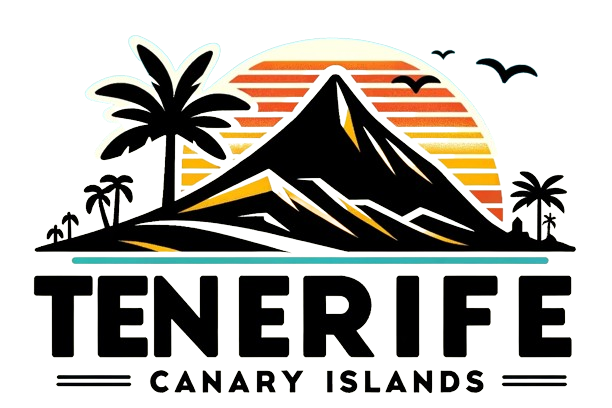Discovering the Majestic Teide National Park: Tenerife’s Crown Jewel
Teide National Park, a UNESCO World Heritage site, is one of the most emblematic natural wonders of Tenerife and the Canary Islands. Dominated by the imposing Mount Teide, Spain’s highest peak, this park offers visitors a landscape of extraordinary beauty and diversity. Teide National Park is a must-visit destination for nature lovers and adventure seekers, from its moon-like terrain to its unique flora and fauna.
In the vast expanse of Teide National Park, you will discover an environment that feels almost otherworldly. The park’s landscape is a kaleidoscope of colors and textures formed by centuries of volcanic activity. The ground shifts from hues of red and ochre in the Roques de García area to the deep black of recent lava flows. This geological diversity tells the tale of the Earth’s dynamic history and provides an unparalleled opportunity for geological studies.
As you venture through the park, the ever-changing scenery captivates your senses. The park’s base is adorned with lush, green forests, primarily composed of Canary Island pine trees, gradually giving way to the barren, lunar landscapes as you ascend. The higher altitudes, with their sparse vegetation and rugged terrain, starkly contrast the verdant lower slopes. The air here is crisp, and the sky, often clear and blue, provides a perfect backdrop for the majestic Teide volcano. The summit of Mount Teide, accessible by foot or cable car, presents a panoramic view that is both humbling and awe-inspiring. On a clear day, you can see the surrounding islands floating on the Atlantic horizon, leaving a lasting impression.
Teide National Park is a treasure trove for those interested in the rich biodiversity. It is home to various endemic species, some found nowhere else on Earth. The unique ecological conditions of the park have led to the evolution of fascinating plant and animal life, adapted to thrive in its varied microclimates. This biodiversity is a delight for nature enthusiasts and a valuable resource for scientists studying evolution and adaptation.
Moreover, the park is not just a haven for daytime explorers. As night falls, it reveals one of its most magical aspects: its clear, unpolluted skies make it one of the best places in the world for stargazing. The Teide Observatory, located within the park, is a testament to the area’s significance in astronomical research. Whether you’re an amateur astronomer or a starry-eyed dreamer, the night sky here will surely leave you in awe.
1. Mount Teide: The Heart of the Park
Mount Teide, the majestic centerpiece of Teide National Park, is the heart of the park and a symbol of Tenerife and the Canary Islands. This imposing stratovolcano, rising to 3,718 meters (12,198 feet), holds the title of the highest peak in Spain and is among the world’s most iconic volcanoes. Its significance extends beyond its impressive height; it is a cornerstone of the region’s geological, ecological, and cultural landscapes.
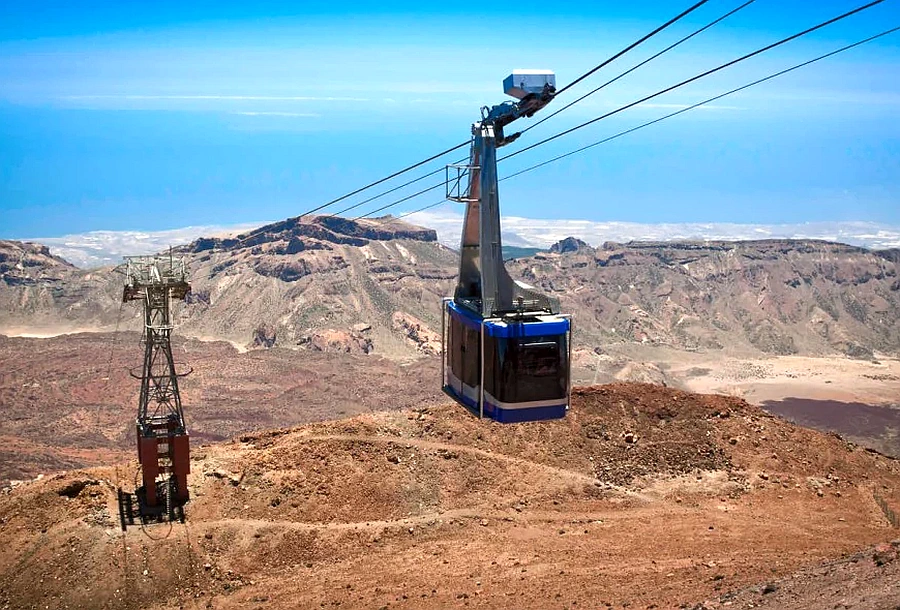
Geological Marvel: Mount Teide’s formation is a testament to nature’s dynamic and powerful forces. The result of volcanic activity has shaped the Canary Islands over millions of years. The volcano’s structure, featuring a classic conical shape with a summit crater, offers an invaluable window into the geological past. The surrounding area, with its lava flows, craters, and volcanic cones, is a natural laboratory for studying geological processes.
Ecological Haven: The slopes of Mount Teide host a range of ecosystems, each thriving at different altitudes. The lower regions of the volcano are covered with lush forests. At the same time, the higher altitudes are characterized by alpine conditions where hardy species, such as the Teide violet and the Tajinaste rojo, flourish. These species have adapted to the harsh, often extreme weather conditions near the summit. This rich biodiversity is crucial for conservation efforts and ecological studies.
Cultural Significance: Mount Teide has been steeped in myth and legend for centuries. The indigenous Guanche people, the original inhabitants of Tenerife, considered the volcano a sacred mountain and an abode of spirits. This cultural reverence reminds us of the deep connection between the natural world and human history.
Tourism and Recreation: As a central feature of Teide National Park, Mount Teide is a magnet for tourists and outdoor enthusiasts. For those who obtain the necessary permit, hiking to the summit is a challenging but rewarding experience, offering stunning views of the Canary archipelago. For those who prefer a less strenuous approach, a cable car ascends near the summit, providing easy access to the breathtaking scenery.
Astronomical Observation Point: The high altitude and clear skies above Mount Teide make it an ideal location for astronomical observation. The Teide Observatory, one of the world’s leading solar observatories, is situated on the mountain’s slopes, benefitting from the excellent observing conditions.
Mount Teide is more than just a mountain; it is a living symbol of natural beauty and power. Its presence dominates the landscape of Tenerife, offering visitors and locals alike a place for adventure, contemplation, and connection with nature. The volcano embodies the essence of Teide National Park, representing a delicate balance between geological might, ecological diversity, and cultural heritage.
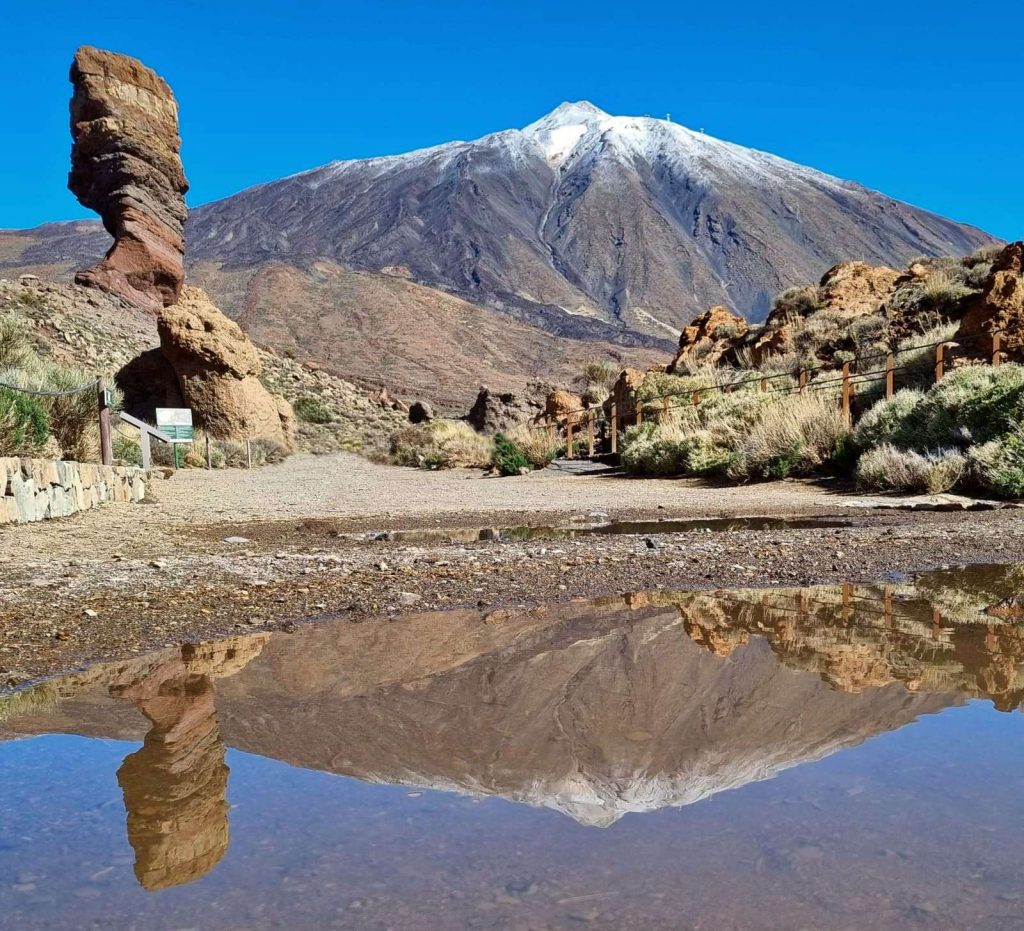
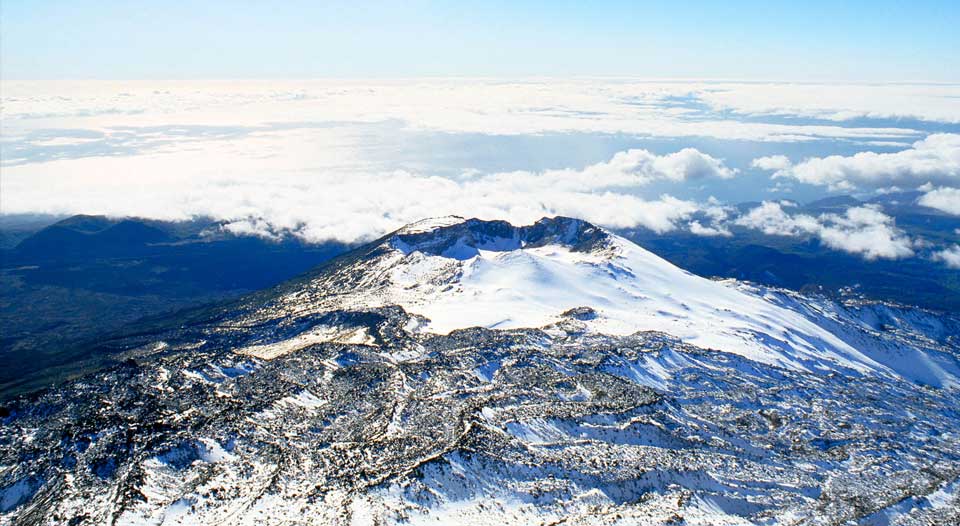
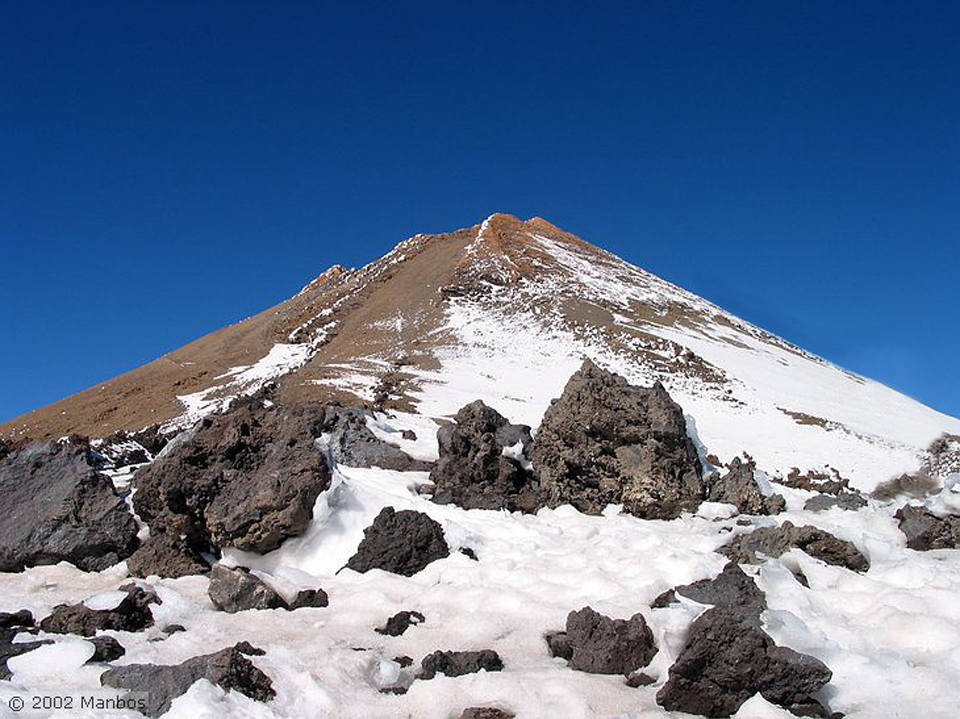
2. Hiking and Walking Trails
Hiking and walking trails in Teide National Park offer diverse experiences catering to all levels of ability and interest. These trails allow visitors to immerse themselves in the park’s stunning natural beauty and provide an up-close encounter with its unique geology, flora, and fauna.
- Roques de García Trail: This is one of the most popular and accessible trails in the park. It offers spectacular views of the famous Roques de García rock formations, including the iconic Roque Cinchado. The trail is relatively easy, suitable for most fitness levels, and provides an excellent introduction to the park’s volcanic landscape.
- Teide Summit Trails: For the more adventurous, hiking to the summit of Mount Teide is a must-do. There are several routes to the top, but the most commonly used are the Montaña Blanca trail and the trail from the upper cable car station. Reaching the summit requires a special permit due to environmental protection efforts. The hike is challenging but rewards hikers with breathtaking panoramic views.
- Sendero de los Sentidos (Path of the Senses): This path offers a sensory experience through the lush forests at the park’s lower elevations. It’s an easy and family-friendly route featuring interpretive signs encouraging visitors to engage with the environment through sight, sound, and touch.
- Pico Viejo Trail: This trail takes you to the second-highest peak in the park, offering stunning views of Teide and the Pico Viejo crater. It’s a moderately difficult hike and offers a different perspective of the park’s volcanic landscape.
- Lunar Landscape Trail: For a surreal experience, the Lunar Landscape trails are ideal. This trail showcases the unique geological formations that resemble a moonscape created by the erosion of volcanic materials over time.
- Las Cañadas Circuit: This extensive trail circles the caldera of Las Cañadas, offering a comprehensive tour of the park’s varied landscapes. It’s a long but relatively easy hike, suitable for those who want to explore the park for a full day.
Each trail in Teide National Park is well-marked and maintained, ensuring a safe and enjoyable experience. Hikers should be prepared for changing weather conditions, especially at higher altitudes, where temperatures can drop and weather can change rapidly. Additionally, hikers should always respect the natural environment and stay on designated paths to protect the park’s fragile ecosystems.

These trails provide a unique opportunity to explore one of the world’s most fascinating volcanic landscapes, making Teide National Park a premier destination for hikers and nature enthusiasts worldwide.
3. Unique Flora and Fauna
Teide National Park is renowned not just for its volcanic landscapes but also for its unique flora and fauna. Many of the species found here are endemic to the Canary Islands, and some are even exclusive to the park itself, having adapted to its unique ecological niches.
Unique Flora:
- Teide Violet (Viola cheiranthifolia): Perhaps the most iconic of the park’s plants, this delicate violet is found only in the high-altitude areas of Teide National Park, especially near the summit of Mount Teide.
- Tajinaste Rojo (Echium wildpretii): This striking plant is known for its towering red or pink spikes of flowers, which bloom in the late spring and early summer. It’s endemic to Tenerife and is a highlight for many visitors.
- Teide Broom (Spartocytisus supranubius): This shrub covers large areas of the park, especially at altitudes between 2,000 and 2,500 meters. It blooms with bright yellow flowers, adding color to the volcanic landscape.
- Canary Island Pine (Pinus canariensis): These resilient trees are adapted to the park’s diverse conditions, particularly the lower and middle zones. They play a crucial role in maintaining the park’s ecological balance.
- Retama del Teide (Spartium junceum ssp. spartioides): This broom species is at higher altitudes. It blooms with white flowers and is a vital nectar source for the park’s insect population.

Unique Fauna:
- Tenerife Blue Chaffinch (Fringilla teydea): This bird is endemic to Tenerife and primarily found in the pine forests of Teide National Park. Its distinctive blue-gray plumage recognizes it.
- Canary Lizards (Gallotia galloti): These lizards are common throughout the Canary Islands but have distinct subspecies within the park. They are often seen sunning themselves on rocks.
- Teide Wall Gecko (Tarentola delalandii): Another endemic species, this small gecko thrives in the park’s rocky habitats, particularly at lower altitudes.
- Berthelot’s Pipit (Anthus berthelotii): This small bird, found in open areas of the park, is recognizable by its brown and white streaked plumage. It’s endemic to the Canary Islands and Madeira.
- Atlantic Canary (Serinus Canaria): Known for its melodious song, this small bird is a namesake of the Canary Islands and can be found throughout the park.
The flora and fauna of Teide National Park are not just beautiful; they are a crucial part of the park’s ecosystem. Visitors are encouraged to respect these species’ habitats and contribute to the conservation efforts that protect this unique biodiversity. The park’s management has put in place measures to ensure these species continue to thrive, maintaining the delicate balance of this extraordinary ecosystem.
4. Astrophotography and Stargazing
Teide National Park offers the best conditions for astrophotography and stargazing worldwide, making it a prime destination for astronomers and night-sky enthusiasts. The park’s high altitude, minimal light pollution, and typically clear skies create an ideal environment for observing and photographing celestial wonders.
Ideal Conditions for Stargazing:
- High Altitude: At over 2,000 meters above sea level, Teide National Park is above much of the cloud cover and atmospheric distortion, providing clearer night sky views.
- Low Light Pollution: The park’s remote location and controlled lighting policies ensure dark skies, which are crucial for observing faint stars and deep-sky objects.
- Dry Climate: Tenerife’s climate contributes to many clear nights throughout the year, increasing the chances for successful stargazing and astrophotography sessions.
Astrophotography Opportunities:
- Milky Way Photography: The park’s dark skies make it an excellent location for capturing the Milky Way, particularly during summer.
- Lunar and Planetary Imaging: The clarity of the skies allows for detailed photography of the moon’s surface, planets, and their moons.
- Deep Sky Imaging: Thanks to minimal light pollution, advanced photographers can capture distant galaxies, nebulae, and star clusters.
Stargazing Activities:
- Guided Tours: Knowledgeable astronomers often lead guided night tours. These tours typically include telescopes and expert explanations of the visible constellations and celestial events.
- Star Parties: Organized events bring together amateur astronomers and the public for nights of observation and learning. These are excellent opportunities for sharing knowledge and equipment.
- Observatory Visits: The Teide Observatory, located in the park, is one of the world’s leading observatories for solar observation. While primarily a research facility, it offers tours that provide insight into professional astronomical research.
Practical Tips for Visitors:
- Equipment: Bring a tripod and camera capable of long exposures for astrophotography. Binoculars or a small telescope can enhance the stargazing experience.
- Clothing: Nights can be cold at high altitudes, even in summer. Dress in warm layers and bring blankets if planning to observe for extended periods.
- Apps and Maps: Astronomy apps can help identify stars, planets, and constellations in the night sky.
Ethical and Responsible Practices:
- Visitors are encouraged to minimize light use to preserve the dark sky environment for everyone.
- Staying on designated paths and respecting the natural environment is important to protect the park’s unique ecosystem.
Experiencing the night sky in Teide National Park can be a profound and awe-inspiring experience, offering a unique perspective on our place in the universe. Whether you’re a seasoned astrophotographer or a first-time stargazer, the park provides a spectacular backdrop for exploring the wonders of the cosmos.
5. Geological Wonders
Teide National Park is a treasure trove of geological wonders, a testament to the Earth’s fiery interior and the dynamic processes that shape our planet. The towering Mount Teide dominates the park’s landscape, but it offers much more in terms of geological diversity and interest.

Mount Teide and Pico Viejo Volcanoes:
- Mount Teide: This iconic stratovolcano is the highest peak in Spain and the third-highest volcanic structure in the world. Its summit offers breathtaking views of the surrounding landscape and is a prime example of volcanic activity.
- Pico Viejo: Mount Teide’s older sibling, Pico Viejo, features a large crater from which lava once flowed, altering the landscape dramatically.
Las Cañadas Caldera:
This enormous depression surrounding Mount Teide is one of the park’s most striking features. The caldera was formed by a series of volcanic eruptions, followed by the collapse of the volcano’s summit, creating the massive, bowl-like structure we see today.
Lava Flows and Formations:
- Various ancient and recent lava flows sculpt The park’s terrain. These flows have created a range of formations, from smooth pahoehoe lava to rough, jagged aa lava.
- The park also features lava tubes, natural tunnels formed by flowing lava as it cools and solidifies on the outside while still flowing on the inside.
Roques de García:
- These are a group of peculiar rock formations near the caldera’s center. Formed by the erosion of ancient volcanic dykes, the most famous among them is Roque Cinchado, a symbol of Tenerife.
Mineral Riches:
The park’s volcanic activity has led to a rich variety of minerals. Visitors can see a spectrum of colors in the rocks and soils caused by the oxidation of different minerals, such as iron, sulfur, and copper.
Teide’s Eggs or ‘Huevos del Teide’:
These are large, spherical accumulations of volcanic material found along some of the park’s trails. They were formed during some of Mount Teide’s more explosive eruptions, as lava rolled downhill, accumulating layers of material.
Geological Trails:
The park offers several trails specifically designed to showcase its geological features. These trails often have interpretive signs explaining the formation and significance of the visible features.
The geological wonders of Teide National Park are not just visually stunning; they offer valuable insights into volcanic processes and the Earth’s geologic history. The park is a living laboratory for geologists, while for visitors, it’s a chance to witness nature’s raw power and beauty. The diverse and dramatic landscape constantly reminds us of our planet’s ever-changing nature.
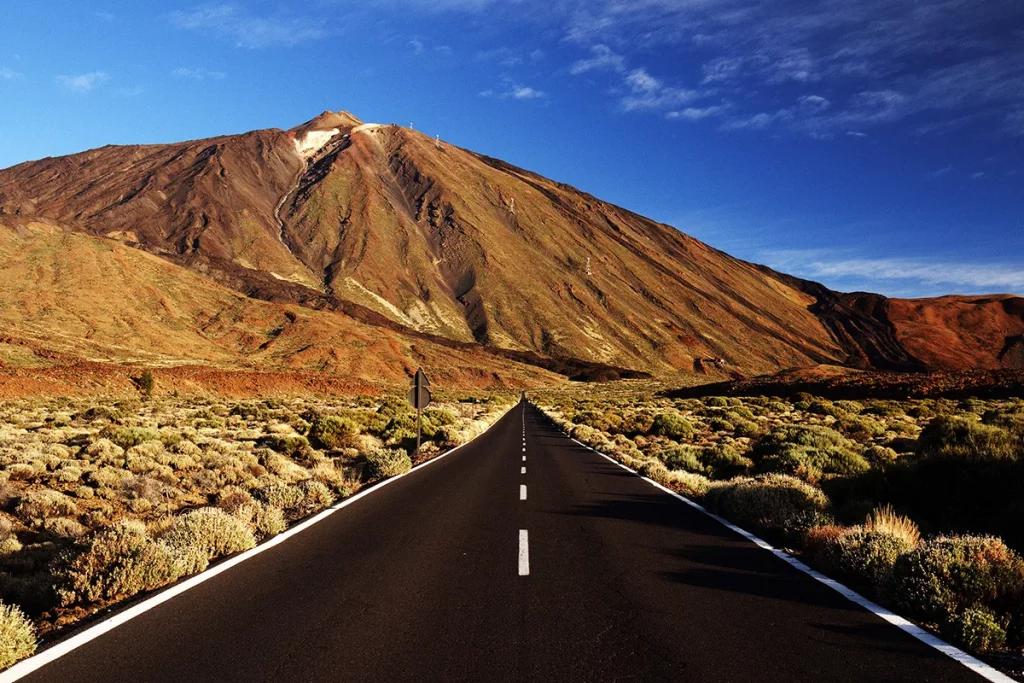
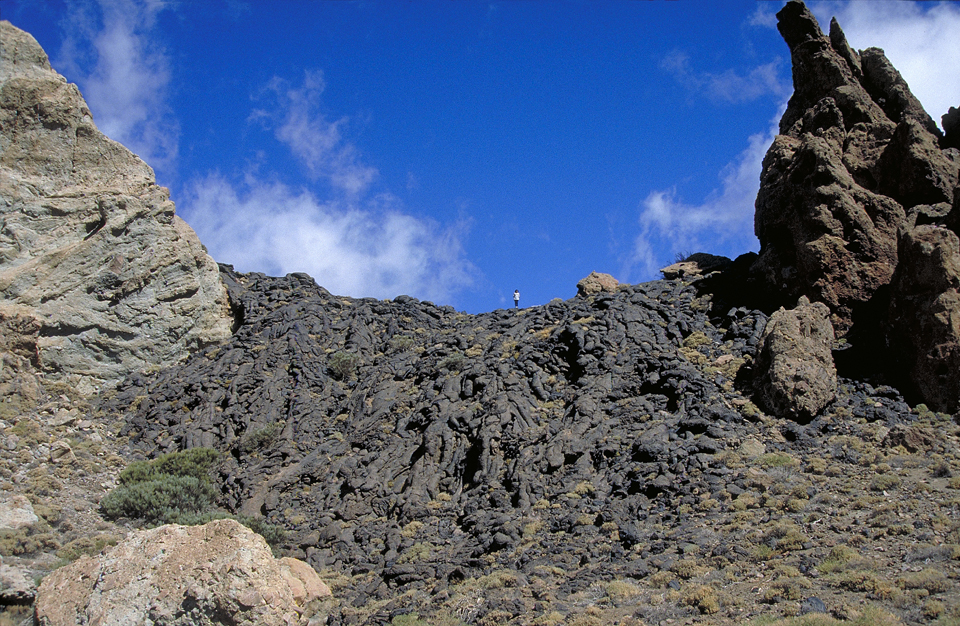
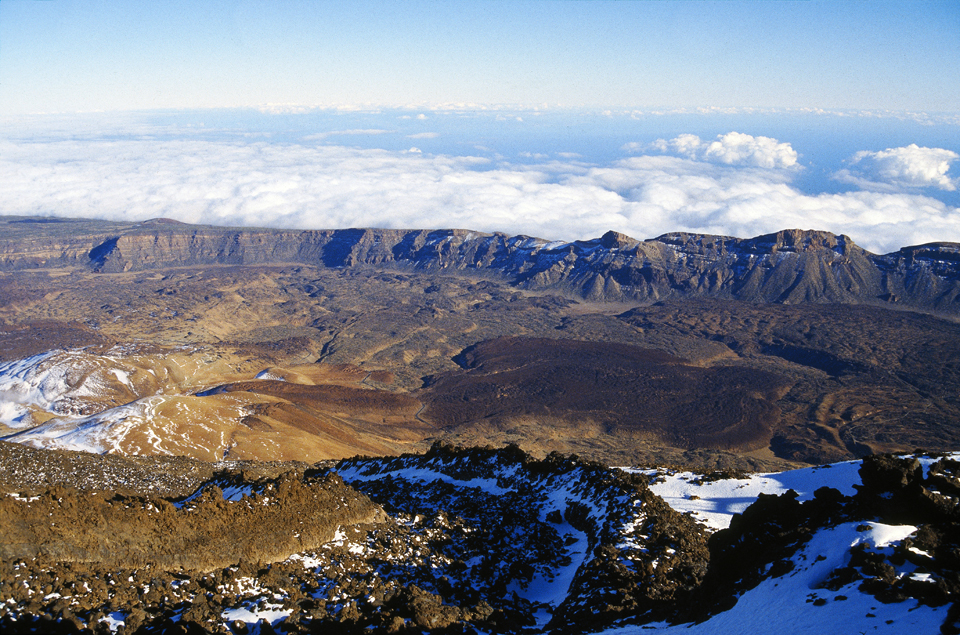
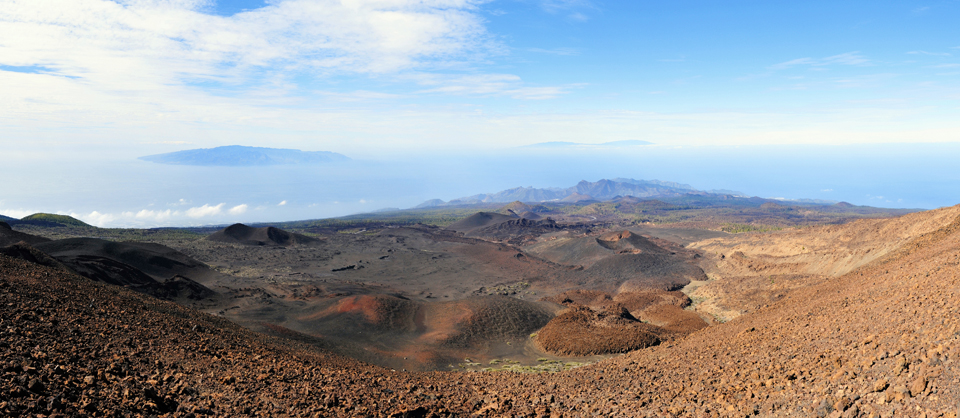
6. Visitor Centers and Facilities
- Educational Resources: The park has several visitor centers, such as El Portillo and the Parador de Las Cañadas, providing educational exhibits about the park’s geology, ecology, and history.
- Amenities: Facilities, including picnic areas, restrooms, and a cafeteria, are available for visitors’ comfort.
7. Cultural Significance
- Historical Importance: The park is a natural wonder and a place of cultural significance, with a rich history tied to the Guanches, the indigenous people of the Canary Islands.
- Photography and Art: The unique landscape has inspired photographers and artists, capturing the interplay of light, shadow, and color in this otherworldly setting.
8. Responsible Visitation
- Preservation Efforts: Visitors are encouraged to follow park guidelines to help preserve the area’s fragile ecosystem and natural beauty.
- Respect for Nature: Staying on marked trails, not disturbing wildlife, and disposing of all trash are essential for responsible and sustainable tourism.
9. Tips for Visiting Teide National Park
- Weather Considerations: The weather can be unpredictable and change rapidly, so it is recommended to dress in layers and bring sun protection.
- Permits for the Summit: If you plan to hike to the summit of Mount Teide, a free permit is required, which should be obtained well in advance due to high demand.
- Access and Transportation: The park is accessible by car and bus services from major towns. Guided tours offer a hassle-free way to explore the park with expert insights.
- Website: https://www.volcanoteide.com/en/national_park
- Learn more here: Exploring the Majestic Teide National Park: A Journey to the Heart of Tenerife.
Map of the Teide National Park
Conclusion
Teide National Park is not just a destination; it’s an experience that immerses you in the raw beauty of nature. Whether you’re hiking its trails, observing its unique flora and fauna, or simply admiring the panoramic views, the park offers a sense of wonder and tranquility. A visit to Teide National Park is essential to any trip to Tenerife, providing an unforgettable encounter with one of the planet’s most spectacular natural landscapes.
Remember, Teide National Park is more than just a scenic backdrop; it’s a living, breathing ecosystem that demands respect and care. Embrace the opportunity to connect with nature in one of its most awe-inspiring forms. Enjoy the adventure, respect the environment, and carry the memories of Teide’s majestic beauty with you.
